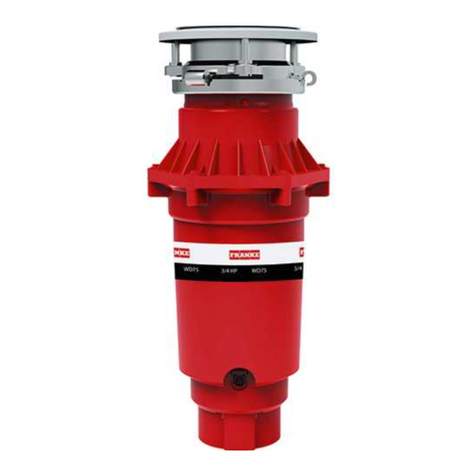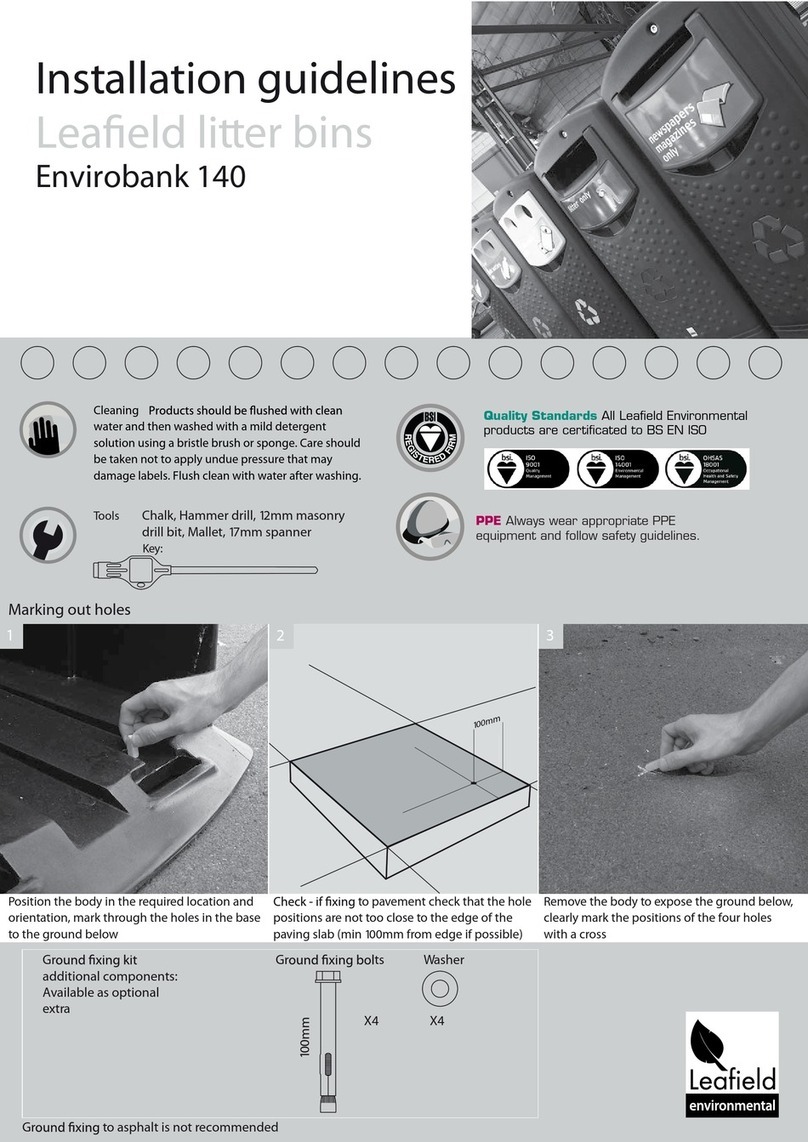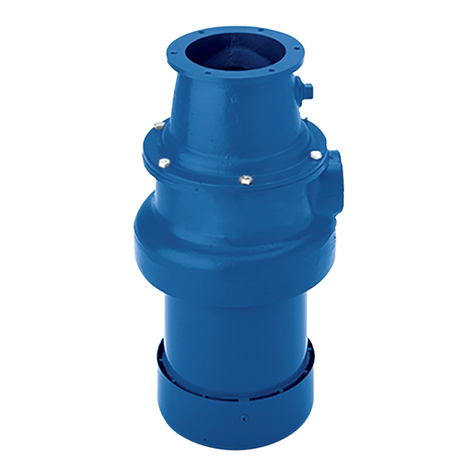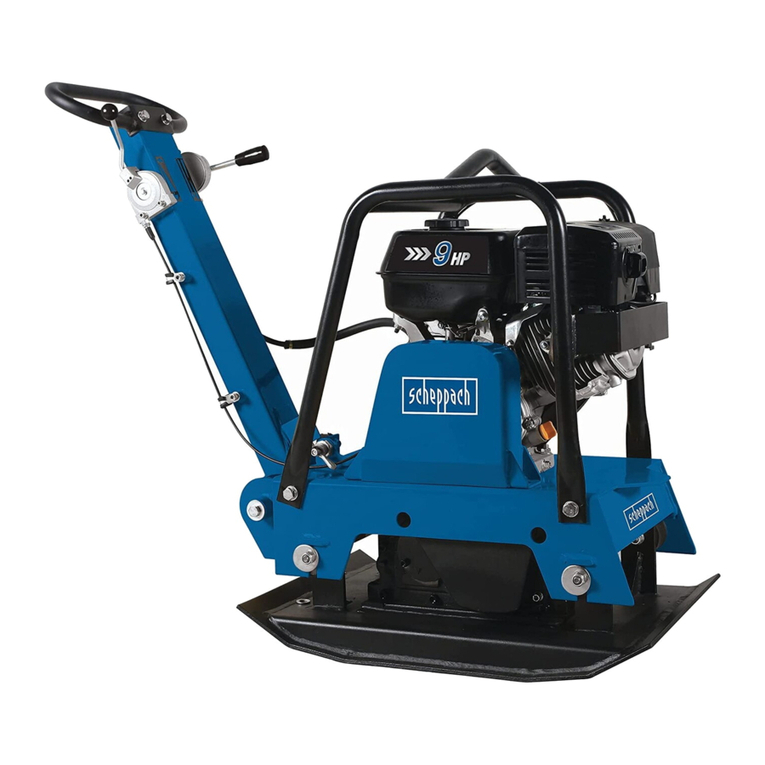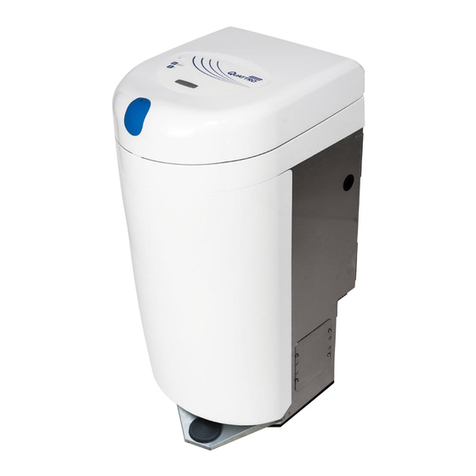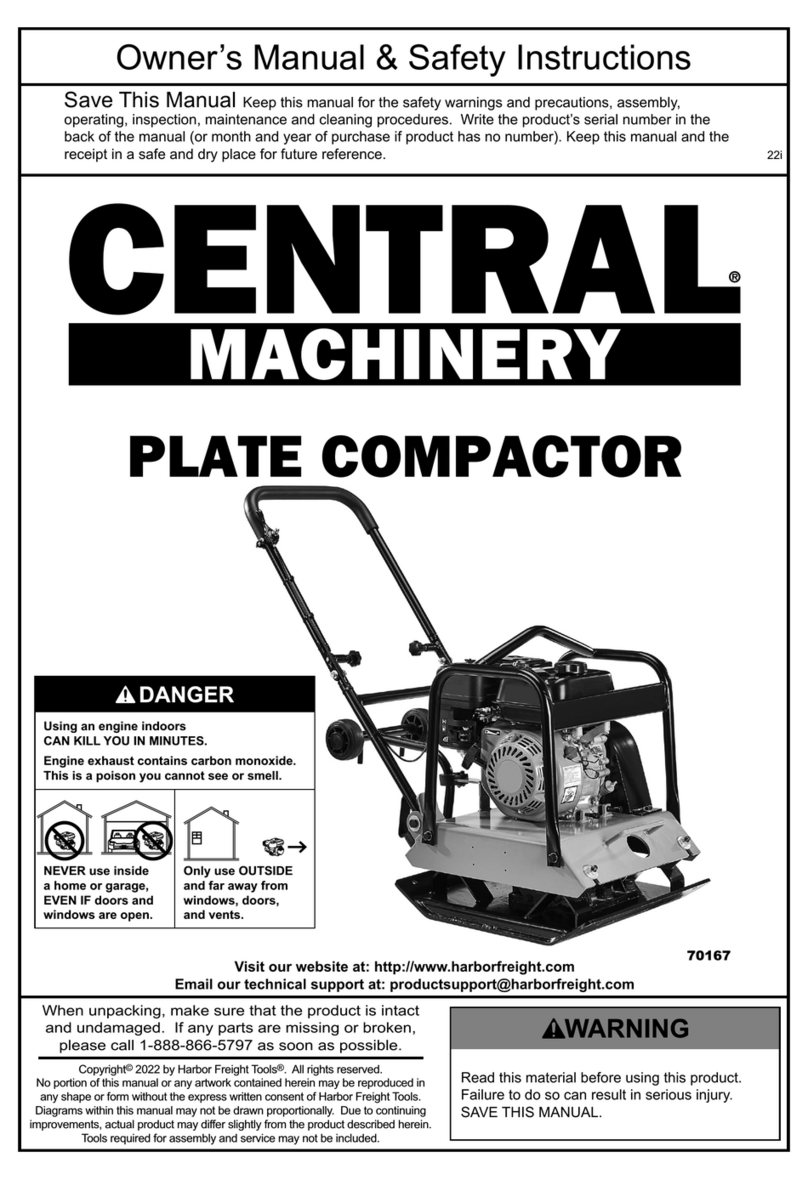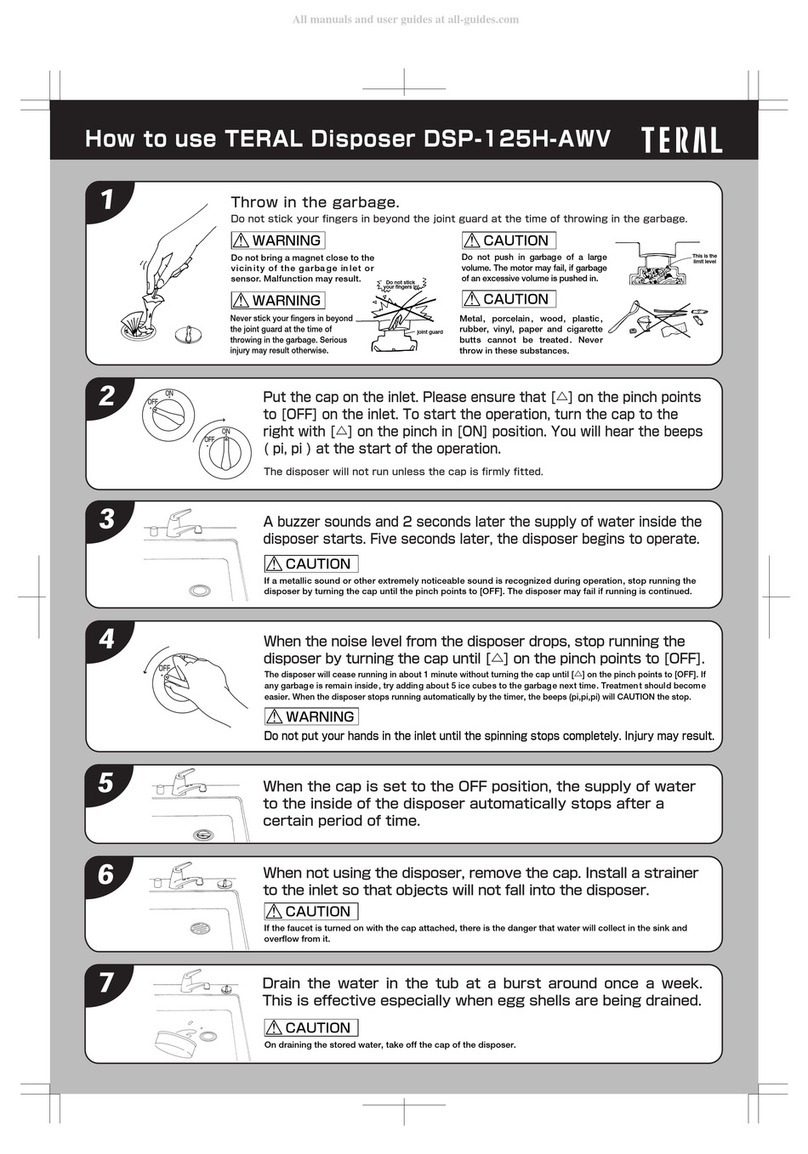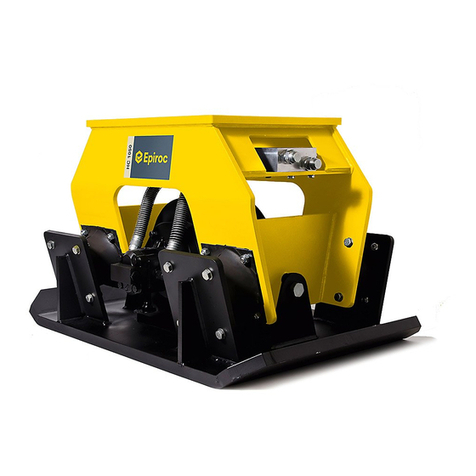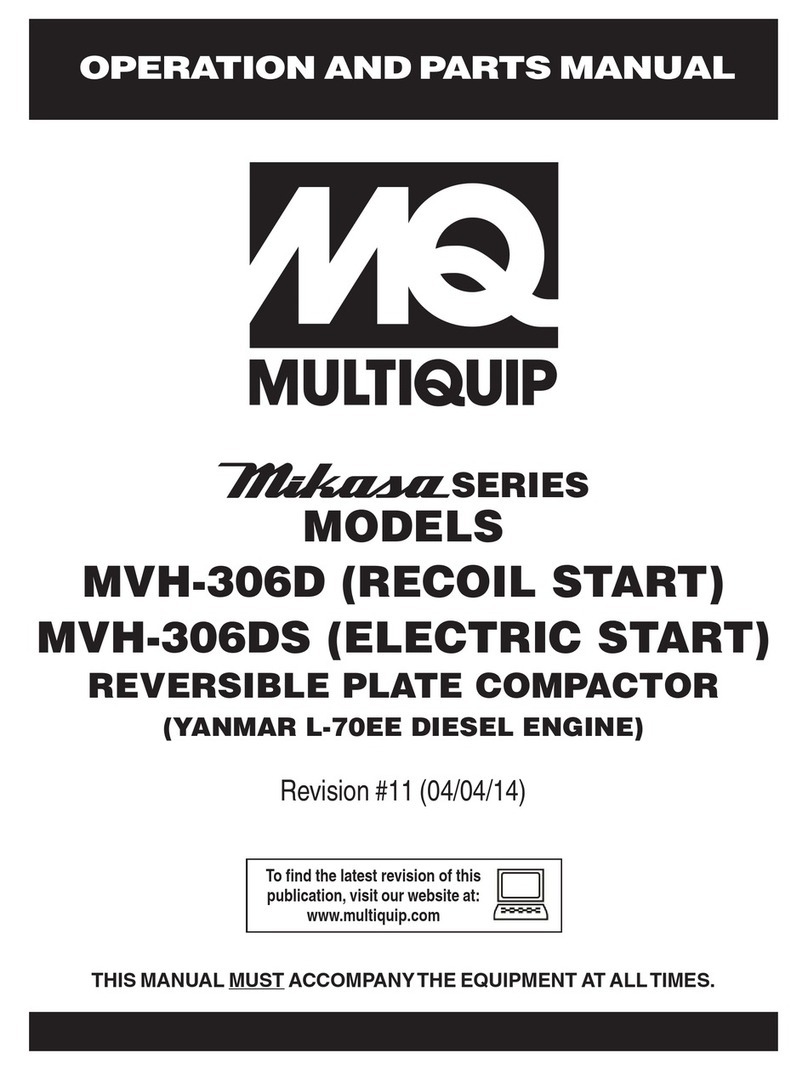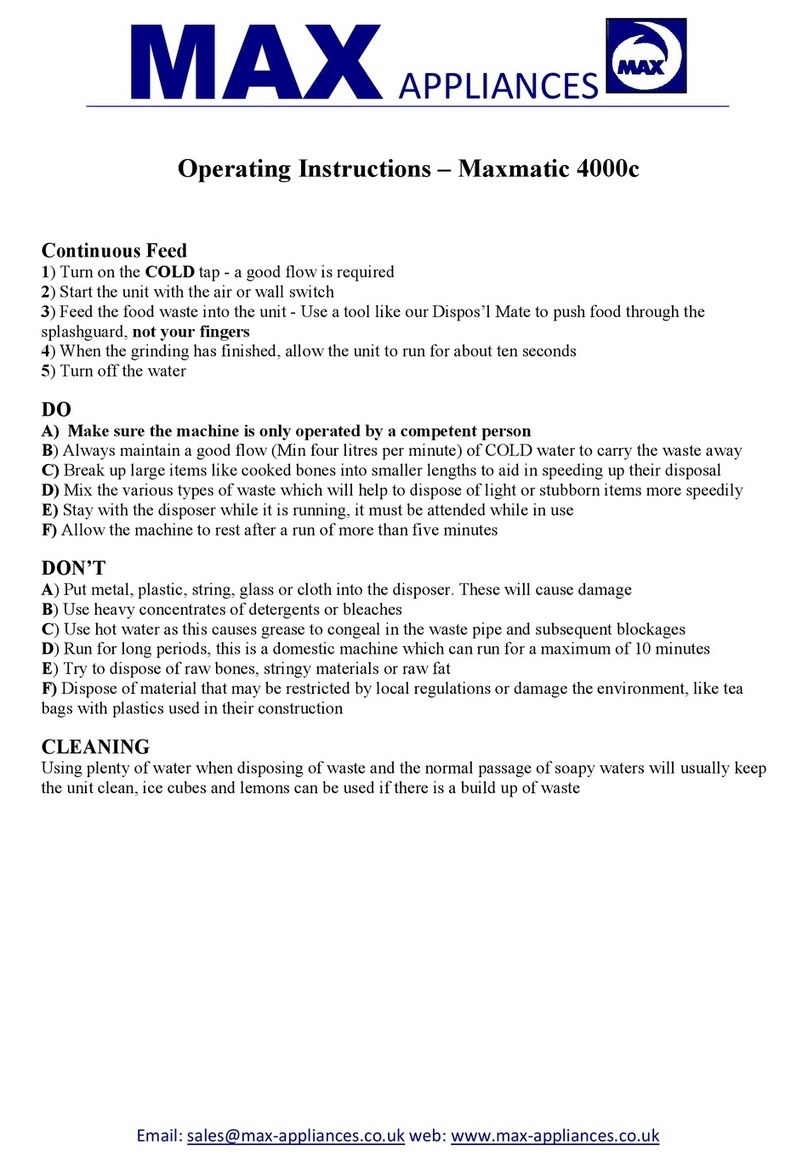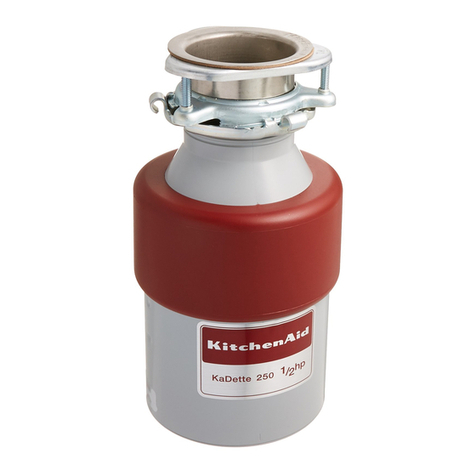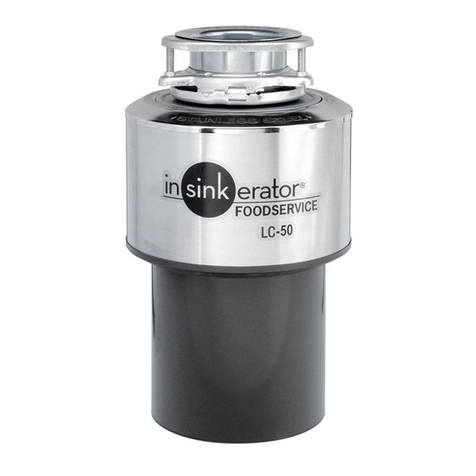
WARNING
6
1.3 Service Safety
For your own personal protection and for the safety of those around you, please read
and ensure you fully understand the following safety information. It is the
responsibility of the operator to ensure that he/she fully understands how to operate
this equipment safely. If you are unsure about the safe and correct use of the eJXPC50 Plate
Compactor, consult your supervisor.
1.3.1 DO NOT attempt to clean or service machine while it is running. Rotating parts can
cause severe injury.
1.3.2 ALWAYS replace worn or damaged components with spare parts designed and
recommended by Tomahawk Power.
1.3.3 ALWAYS keep machine clean and labels legible. Replace all missing and hard-to-read
labels. Labels provide important operating instructions and warn of dangers and hazards.
1.3.4 This equipment is heavy and must not be lied single-handedly. Must be listed with
two people or use suitable liing equipment.
1.3.5 Cordon off the work area and keep members of the public and unauthorized personnel
at a safe distance.
1.3.6 Personal Protective Equipment (PPE) must be worn by the operator whenever this
equipment is being used.
1.3.7 Make sure you know how to safely switch this machine OFF before you switch it ON in
case you get into diffculty.
1.3.8 Always switch OFF and unplug the motor before transporting, moving it around the
site, or servicing it.
1.3.9 During use, the motor becomes very hot, allow the motor to cool before touching it.
Never leave the motor running and/or unattended.
1.3.10 NEVER remove or tamper with any guards fitted, they are there for your protection.
Always check that guards are in proper condition, if any are damaged or missing, DO NOT
USE THE MACHINE until the guard has been replaced or repaired.
1.3.11 NEVER pull or guide the machine using the cable and never pull on the cable to
diconnect the plug.
1.3.12 DO NOT operate the machine when you are ill, feeling tired, or when under the
influence of alcohol or drugs.
1.3.13 Ensure that any trailing cable is protected against damage and not liable to be tripped
over or trapped underneath the machine.
1.3.14 DO NOT use the Motor Guard as a Liing Point.
1.3.15 DO NOT Jet Wash the machine as this could result in serious injury or even death!
1.3.16 DO NOT use this machine in wet conditions. The electrical components of the
machine NEVER be exposed to water or liquid of any kind as this could result in serious
injury or even death!
